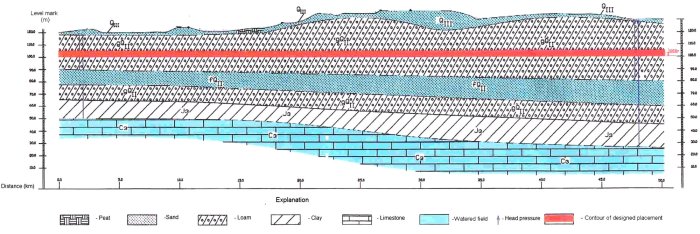Director's Corner
10 July 2008
 Barry Barish |
The proposed Russian ILC site
One of the most difficult and tricky issues for the Global Design Effort in carrying out our design work is how to approach the siting issue for the ILC before proposals are actually solicited for hosting the machine. Conventional facilities are a major part of the project, accounting for almost one third of the total costs. Therefore, in order to bring as much reality to our reference design as possible, we asked for and studied three "sample sites," one from each region. In carrying out the reference design, regional subgroups that worked in parallel and were coordinated by our Conversional Facilities and Siting (CFS) group studied these sites. Since all three of our sample sites were deep sites about 100 metres underground, one of the questions that we postponed but flagged as important to study in the next phase were the comparative advantages and disadvantages of shallow sites. One specific example of a shallow site has been suggested to us by our Russian collaborators. We got a first look at this interesting site near Dubna, Russia, during our GDE meeting last month.
Our ILC baseline is for a deep site and we learned from our studies that all three sample deep sites could satisfy the requirements for the ILC. Although our baseline has not changed, we want to make sure we investigate alternatives for the project. For example we intend to investigate whether there could be significant advantages or cost savings for shallow sites. There are actually many difficult issues to consider for candidate shallow sites, including the flatness of the site, geology, seismic mitigation, protecting the ground water, land usage questions and many more. The Russian site offers one rather unique solution to many of these questions, which is why we plan to pursue our studies further for that site.
I should emphasise that our goal is not to favour one site over another, but rather to be ready to provide the best possible information to potential hosts for their ILC siting considerations. In our present models, the host will pay the major part of the siting costs. It will also be the host's responsibility to make the tradeoffs between location, technical features, costs and other considerations. Our work should help guide actual site studies. In addition, the machine design should be adapted to the sites to take advantage of existing facilities, and we will need to work with any potential hosts to optimise the design for their site.
While at Dubna, we met with representatives of the Russian State Project Institute (GSPI, Moscow) which has a 60-year history of designing and constructing Soviet and Russian nuclear power stations, nuclear centres and scientific accelerator centres (JINR Dubna, IHEP Protvino, ITEP Moscow, INR Troitsk). They have made a very preliminary study of the site and we carried out a set of discussions on their present understanding. We are now negotiating to set up a statement of work for some more detailed studies. The future work will include drilling one 1.6-metre borehole near the proposed location of the interaction region. The work at GSPI will be coordinated through JINR and the GDE oversight will be done by Wilhelm Bialowons, DESY.
 The Russian shallow beam concept, having a near surface service tunnel. The Russian shallow beam concept, having a near surface service tunnel. |
 The proposed Russian ILC site located about 50 kilometres northeast of Moscow. The proposed Russian ILC site located about 50 kilometres northeast of Moscow. |
The Russian site, as can be seen in the figure, has a thick layer of loam, a claylike substance, about 20 metres below the surface. This basically creates wetlands, since the surface water has nowhere to go. The loam layer appears good for drilling a tunnel, would not have problems with protecting the tunnel from the water or, even more importantly, protecting the ground water from potential radiation from the machine. Since this layer is so near the surface, the second service tunnel can be replaced by a surface or near-surface substructure that could be much less expensive than a second tunnel. Also, the services might be arranged in a more optimal and less expensive way than deep underground.
The proposed siting region is very thinly populated and practically free of industrial structures, rivers and roads. It is very steady seismically and it has stable geological characteristics. The flat relief and geological conditions would allow placing the ILC at a shallow depth of about 20 metres. The experimental halls and other large underground excavations could be done inexpensively using cut-and-cover techniques.
In addition to the Dubna site, we plan to study other possible shallow site solutions, for example in a desert. We are also doing value engineering on the deep sites to minimise the costs and will be looking at different models for sharing the costs of the ILC that may involve shared site costs. All of these studies will be done to enable us to give the best possible information to potential hosts. We do not expect to invite proposals until near the completion of the Technical Design Phase in 2012.
-- Barry Barish
